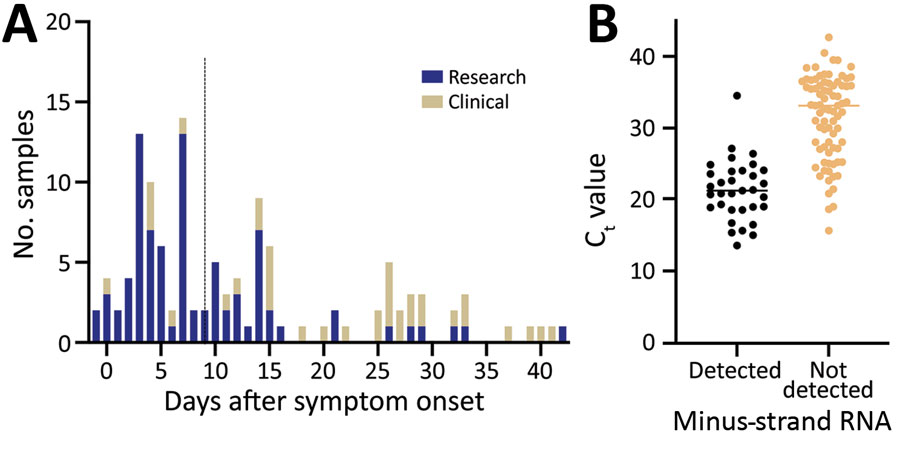Volume 27, Number 2—February 2021
Dispatch
Strand-Specific Reverse Transcription PCR for Detection of Replicating SARS-CoV-2
Figure 1

Figure 1. Frequency distribution of days between symptom onset and testing in study on strand-specific real-time reverse transcription PCR for detection of replicating severe acute respiratory syndrome coronavirus 2, California, USA, 2020. Dashed line indicates the median number of days since symptom onset. B) Distribution of standard real-time reverse transcription PCR cycle threshold values by results of strand-specific real-time reverse transcription PCR. Horizontal line indicates median.
Page created: December 07, 2020
Page updated: January 24, 2021
Page reviewed: January 24, 2021
The conclusions, findings, and opinions expressed by authors contributing to this journal do not necessarily reflect the official position of the U.S. Department of Health and Human Services, the Public Health Service, the Centers for Disease Control and Prevention, or the authors' affiliated institutions. Use of trade names is for identification only and does not imply endorsement by any of the groups named above.